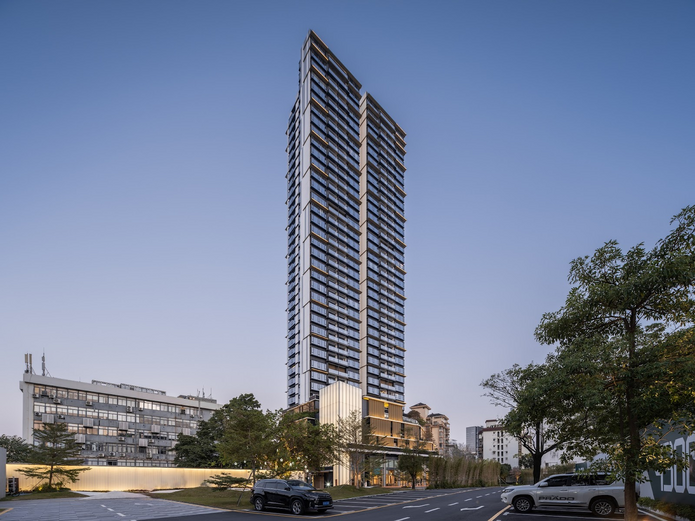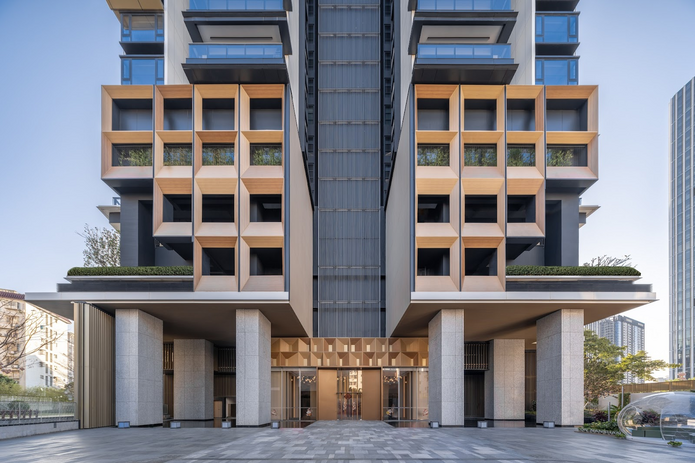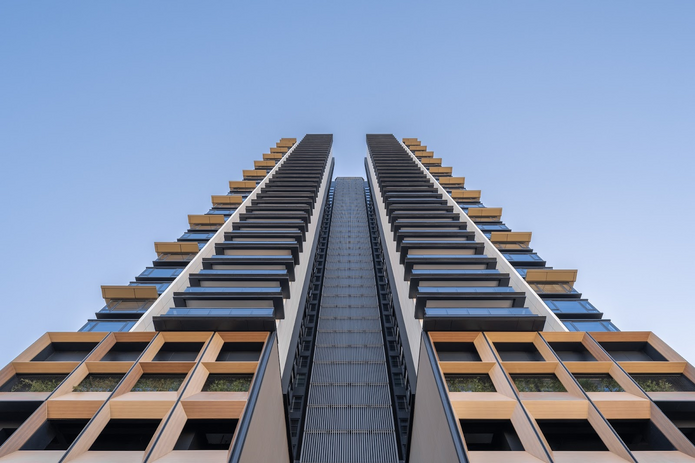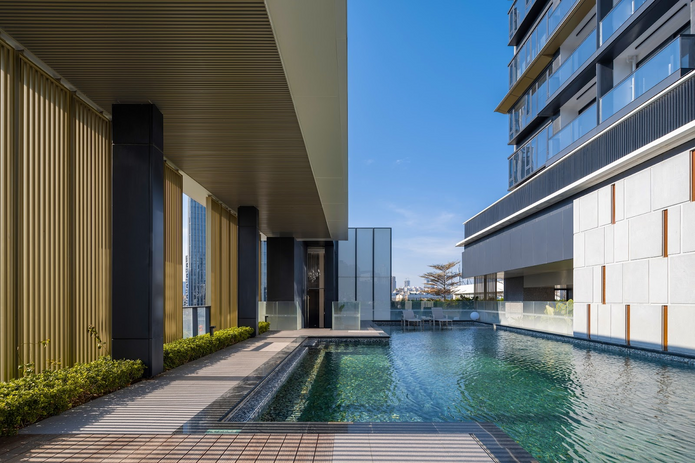Aedas-Designed Zhongtai Residential Development – An Oasis in a Pacy City

Situated in the Nanyou district in the central Nanshan area, the Zhongtai Residential Development consists of a five-storey podium and above it a 33-storey residential building providing 238 units. On account of the site’s lack of pleasant greenery, the design’s primary objective is to inject vitality and improve the urban interface.
“The premise is to create an urban oasis, so the project will be a locus of calm and respite in the fast-growing city,” explains Cary Lau, Aedas Global Design Principal. The main pedestrian entrance, ancillary retail, and community services are located on the east side of the project. The first and second floors of the podium are reserved for retail use, and the third, as well as fourth, are where above-ground parking is proposed; on top of them, there is a roof garden.

The decision to allocate parking spaces to above ground accords greater opportunities for inserting green landscape space, in the same way the podium floor plates retreat for the creation of green platforms. The residential tower is also raised to afford a better view and a quieter environment. At the drop-off area and lobby, the design creates a rich green space to conjure an affable, home-like feeling: Pebbles and trees on both sides, a boulevard along the vehicular entrance, and a backlit feature wall at the center. The floor finish and water features also extend from the exterior to the interior that ensures a consistent and seamless entry experience.

On the tower facade, besides interpellating milky glass and aluminium louver materials, the timber pattern with aluminium cladding are low-emitting materials used to improve indoor air quality; Insulated Glazing Units are adopted to minimise solar heat gain, demonstrating adherence to the eco-conscious objective. Adding to the mix of beige and royal grey stone on the podium, the overall facade becomes variegated and pleasing to the eyes.

“The design explores alternatives to maximise green public space and achieves the ideal of placemaking. Our hope is to create an architecture that promotes people’s well-being as well as strengthens urban relations,” says Lau.




